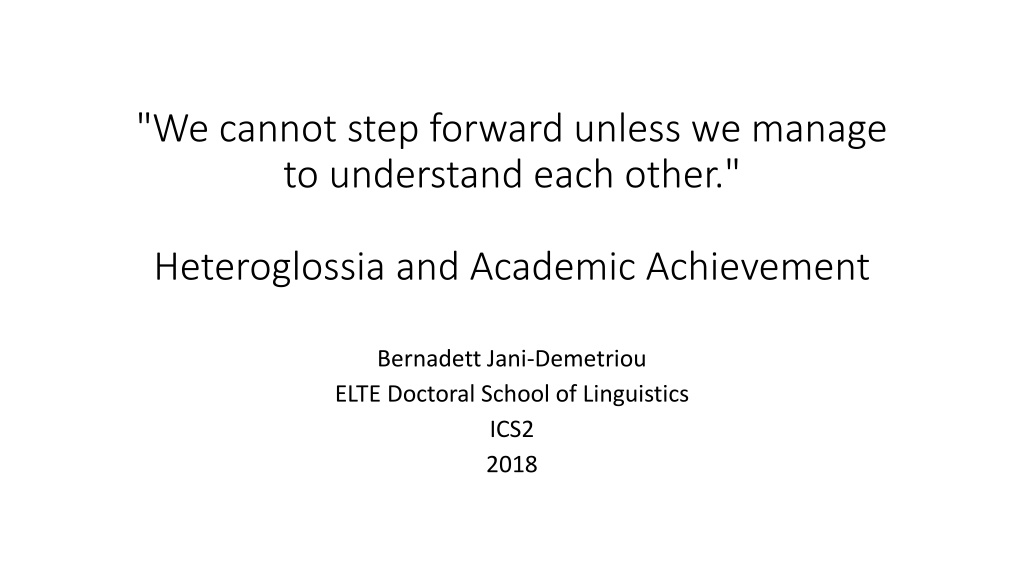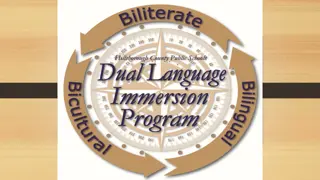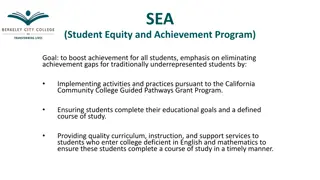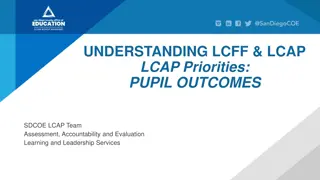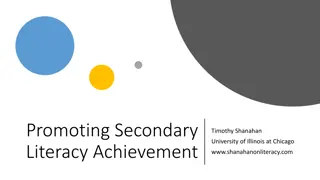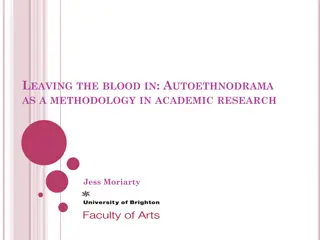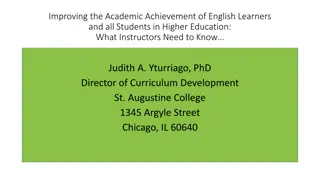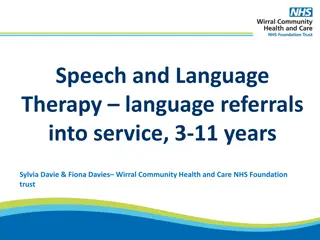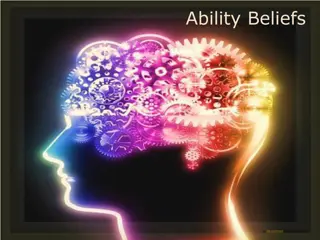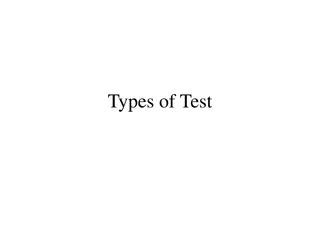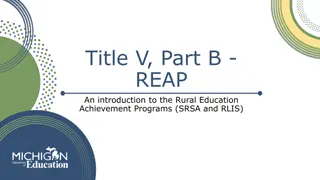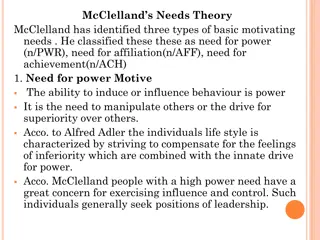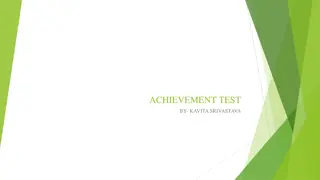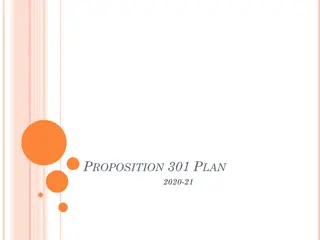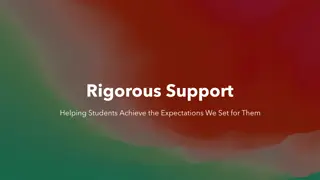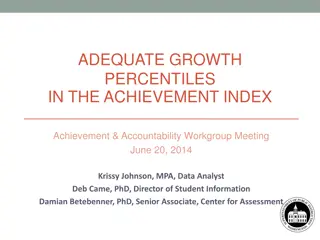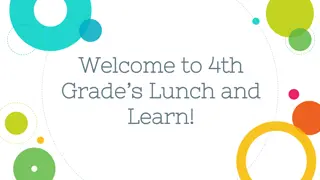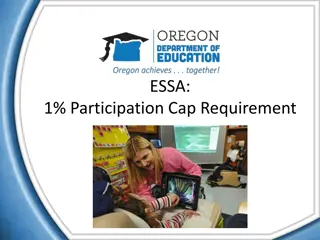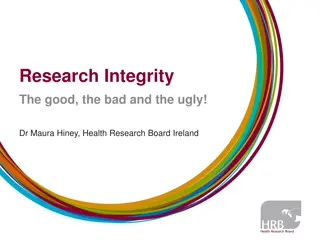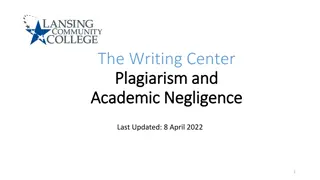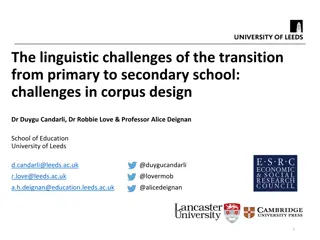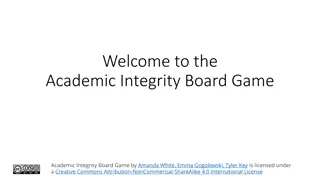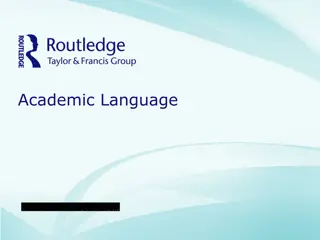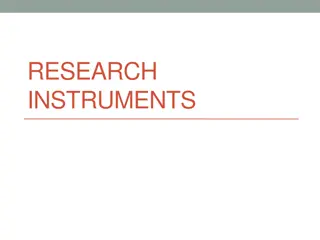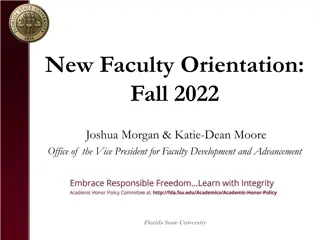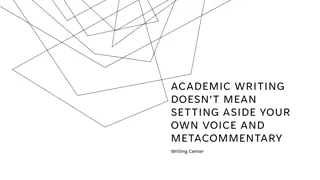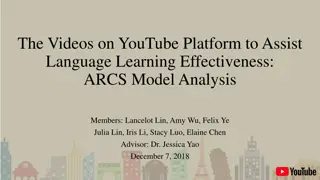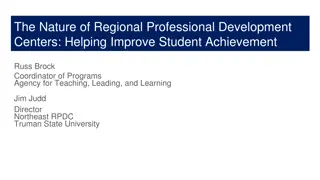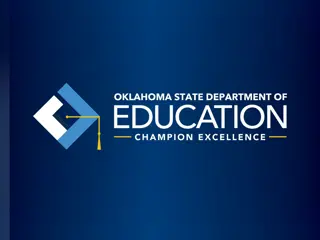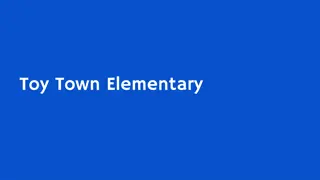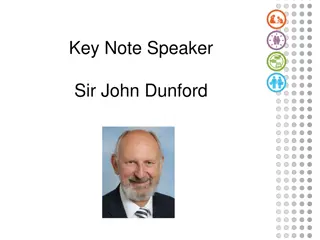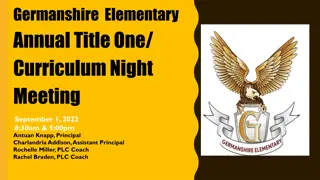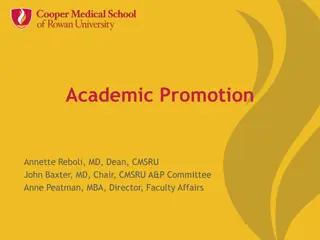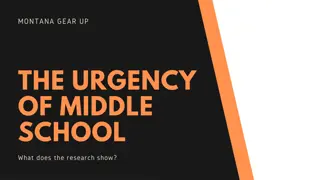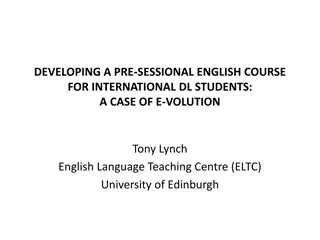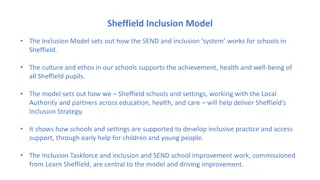Language Practices and Academic Achievement in Ethnolinguistic Research
Examining the language practices and academic achievement of Roma children in a bilingual settlement through ethnolinguistic research conducted in Tiszavasvari. The study explores the implementation of the Pedagogy of Translingual Communication, focusing on heteroglossic language practices and the influence of social connections on language use.
- Language practices
- Academic achievement
- Ethnolinguistic research
- Heteroglossia
- Translingual communication
Download Presentation

Please find below an Image/Link to download the presentation.
The content on the website is provided AS IS for your information and personal use only. It may not be sold, licensed, or shared on other websites without obtaining consent from the author. Download presentation by click this link. If you encounter any issues during the download, it is possible that the publisher has removed the file from their server.
E N D
Presentation Transcript
"We cannot step forward unless we manage to understand each other." Heteroglossia and Academic Achievement Bernadett Jani-Demetriou ELTE Doctoral School of Linguistics ICS2 2018
Ethnolinguistic research in Tiszavasvri 2016: K roli G sp r University Translanguaging Research Group led by J nos Imre Heltai Tiszavasv ri: 12,500 habitants 200 km from Budapest Bilingual Roma settlement Multi-sited fieldwork Interviews (22 hours recorded data) with: The principal and teachers of the school (14 interviews) Children (interviews were taken in groups in Grade 1, 3 and 5) Parents (25 people from the Roma settlement) Lesson observations (more than 60 lessons) 2017: The Pedagogy of Translingual Communication was introduced to the school which aims to apply translanguaging theory and practices Translanguaging Workshops 2017-2018
Language practices of the Roma in Tiszavasv ri Isolated settlement around 3000 habitants Economically disadvantaged area Children s language socialization is linked mainly to Romani resources It is problematic to determine their language practices by claiming they speak "Romani"
Heteroglossic language practices Focus shift from languages to the speaker s language practices: "people deploy whatever communicative resources are available to them to make meaning" (Blackledge Creese 2018: 14) Language practices consist of complex semiotic sources which are to convey meaning, express identity and form and manage social connections among speakers Language practices index social positions Speaking is a dynamic process in which interlocutors are actively involved Interpretation, meaning-making occurs with the help of people s previous knowledge and experience (Bakhtin 1986, Agha 2007, Blommaert Rampton 2011, Garc a 2014, Blackledge Creese 2018)
The Magiszter Primary School In the academic year 2016/2017 475 pupils Only Roma children, from the settlement A significant part of the children operate with practices and resources mainly linked to Romani when they start school: "I got a bunch of children, of whom I thought that they were less able [ ] But then I realized that they were not necessarily less able than others and that s why were staring at me when were given instructions but because they did not understand what I had told them." (Teacher of Grade 3) Teaching is linked solely to language practices thought to be of Standard Hungarian The school s programme is following the National Curriculum There is no bilingual programme available for the school
Student perspectives The way how the children value their own language practices is determined mainly by the monolingualism of the school (Heltai 2016). Standard Hungarian is commonly viewed as the proper way of speaking and this ideology is reinforced by the school s monolingual teaching programme (Heltai 2016): I: And what about your Mum? How did she speak to you? In Hungarian or in Romani? Ch1: In Hungarian. Ch2: To me my Mum always in Hungarian. Ch1: We were not taught how to speak Romani because my Dad is a member of the Mini- [.] Muni- [.] Minority Party, he has a shop and that is where my Mum works. "Mixing languages" is less valued than the "clear", "authentic" standard languages: It is a "mixed" or "degenerated" language in opposition to the "authentic", "clear" Romani
Teachers language ideologies of "the standard language" Hungarian language ideologies are influenced by the standard language hegemony (Bod 2016) "We accept standard languages and we cannot really deal with what these children and parents speak because we consider this as not real [e.g. language]. (Teacher 1 from the workshop) "I think her [Teacher 1] opinion is that because this is not a written language, not a standard language, we cannot accept it without reservation like we do with a standard language, because she said that if I don t understand something, I just grab a dictionary and look up the word but with this I cannot do anything if I don t understand a word here. (Teacher 2 from the workshop) Languages are separate and bounded entities (Blommaert & Rampton 2011) "Ok. So now we are supposed to advocate the children to speak in a way to mix languages? Once speak in one language, other time in the other? Won t we get confused? And how will they learn Hungarian this way? (Teacher 3 from the workshop)
Language ideologies of the teachers about language practices linked to Romani They do not speak the standardized,"authentic Romani : "and for example there were Roma folk tales and I made my students read them, and then they made it clear that it is not like their language, but they managed to translate it somehow. So it is strange, and now when we were doing this task, they said that this is not the real gypsy language, (...) they just add suffixes to it [e.g. to Hungarian words] and they say it is gypsy language from that" (Teacher in Grade 2) The ideology of the standard can be found in connection with Romani as well: "I know somebody who taught me this language and he is also Roma, and he has a C1 Romani language exam and he knows those slangs which are spoken here. And I think it would be better to invite him to help us. Ok, I m not saying he should teach us the proper Romani, because I know it is very different but if you know that, then obviously you understand their way of speaking, what they speak at home, because if you know the original, you know the slang of it too." (Assistant teacher in Grade 3)
Language ideologies of the teachers: separate languages It is bad influence for the language use of the children if they are allowed to speak Romani at school: "God forbid that I should degrade anybody but I impose limit to the children because I don t let them speak Romani whenever they want, because my fear with this is that they wouldn t be able to keep balance and everybody would just speak randomly." (Teacher from the workshop) It is the school s duty to teach students the Standard Hungarian how to speak "properly : "Where is the borderline from which a child should know that this or that task should be completed not with his/her bilingual method but he/she has to concentrate to try to orient his/herself to communicate in Hungarian? (Teacher from the workshop) "It causes tension that here we have requirements (...) and we have to evaluate according to this in Hungarian Grammar lessons so we have to aim to correct them according to the Standard language. However, with translanguaging is not working to keep on correcting the children. So we have to combine these two together; to correct them but at the same time it is possible to say it in other ways as well. But I have to make the children understand that if they are assessed or writing tests or anything like this, it won t be correct the way how they say it. (Teacher from the workshop)
The transformative power of Translanguaging Adapting the linguistic environment of the school to the children s needs by creating the suitable linguistic landscape can change the hierarchy among linguistic features linked to various cultures: "We have to get to know and learn their vocabulary in order to understand what they are talking about" (assistant teacher in Grade 2) An approach with a transformative potential: It is "attempting to wipe out hierarchy Thus, translanguaging could be a mechanism for social justice, especially when teaching students from language minoritized communities" (Garc a & Leiva, 2014, p. 200) "We have to treat bilingualism with an attitude so that we encourage children to use their own language fearlessly" (Teacher from the workshop) "Sometimes I also make the same mistake: Don t speak in Romani because I do not understand it! And I think they do not like this because it is like I don t respect their language and culture" (Teacher from the workshop) "It is very important for the teachers who do this [e.g. translanguaging] to accept that we are not the same, to accept differences. Only this, only with this method that I am the teacher and everything has to be how I want it, so with this it won t work at all." (Teacher from the workshop)
T: - Would you help me? In Romani? One sentence? Ch: - A little child has cut his hand. T: - Ok, but let s try to say it in Romani. Ch: -Egy cino csav csingy peszko v sz. T: - Well done. You did very well.
References Agha, Asif 2007. Language and Social Relations. Cambridge University Press, Cambridge. Bakhtin, M.M 1986. Speech Genres and Other Late Essays. Ed. M. Holquist and C. Emerson. Austin: University of Texas Press. Blackledge, Adrian Creese, Angela 2014. Heteroglossia as practice and pedagogy. In: Blackledge, Adrian Creese, Angela (eds.): Heteroglossia as practice and pedagogy. Dortrecht: Springer. 1 20. Blackledge, Adrian Creese, Angela 2018. Language and Superdiversity: An Interdisciplinary Perspective. In: Blackledge, Adrian Creese, Angela (eds.) The Routledge Handbook of Language and Superdiversity: An Interdisciplinary Perspective. Birmingham: Routledge. Blommaert, Jan Rampton, Ben 2011. Language and superdiversity. In: Blommaert, J. Rampton, B. Spotti, M (eds.): Language and Superdiviersities. Vol 13. No. 2: 1-22. Bod Csan d 2016. Nyelvi ideol gi k s k l nbs gek. Kolozsv r: Nemzeti Kisebbs gkutat Int zet. Garc a, Ofelia 2014. Becoming Bilingual and Biliterate. Sociolinguistic and Sociopolitical Considerations. In: C. Addison Stone, E. R. Silliman, B. J. Ehren, & G. P. Wallach (eds.): Handbook of language and literacy: Development and disorders. The Guilford Press, New York. 145-160. Garc a, O. Leiva, C. (2014). Theorizing and enacting translanguaging for social justice. In A. Blackledge A. Creese (Eds.), Heteroglossia as practice and pedagogy (pp. 199 216). Dordrecht, Netherlands: Springer. Heltai J nos Imre 2016. Heteroglosszia: cig ny/roma tanul k besz dm djai az iskol ban. In: Bartha Csilla (szerk.): ltal nos Nyelv szeti Tanulm nyok 28. Akad miai, Budapest. 259-78.
